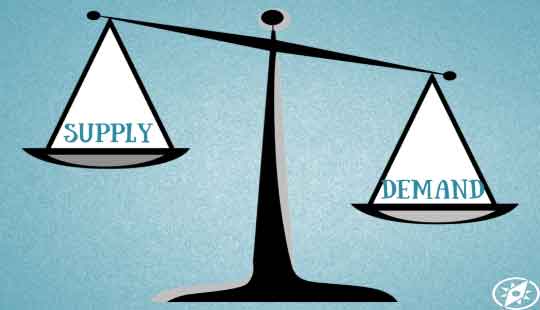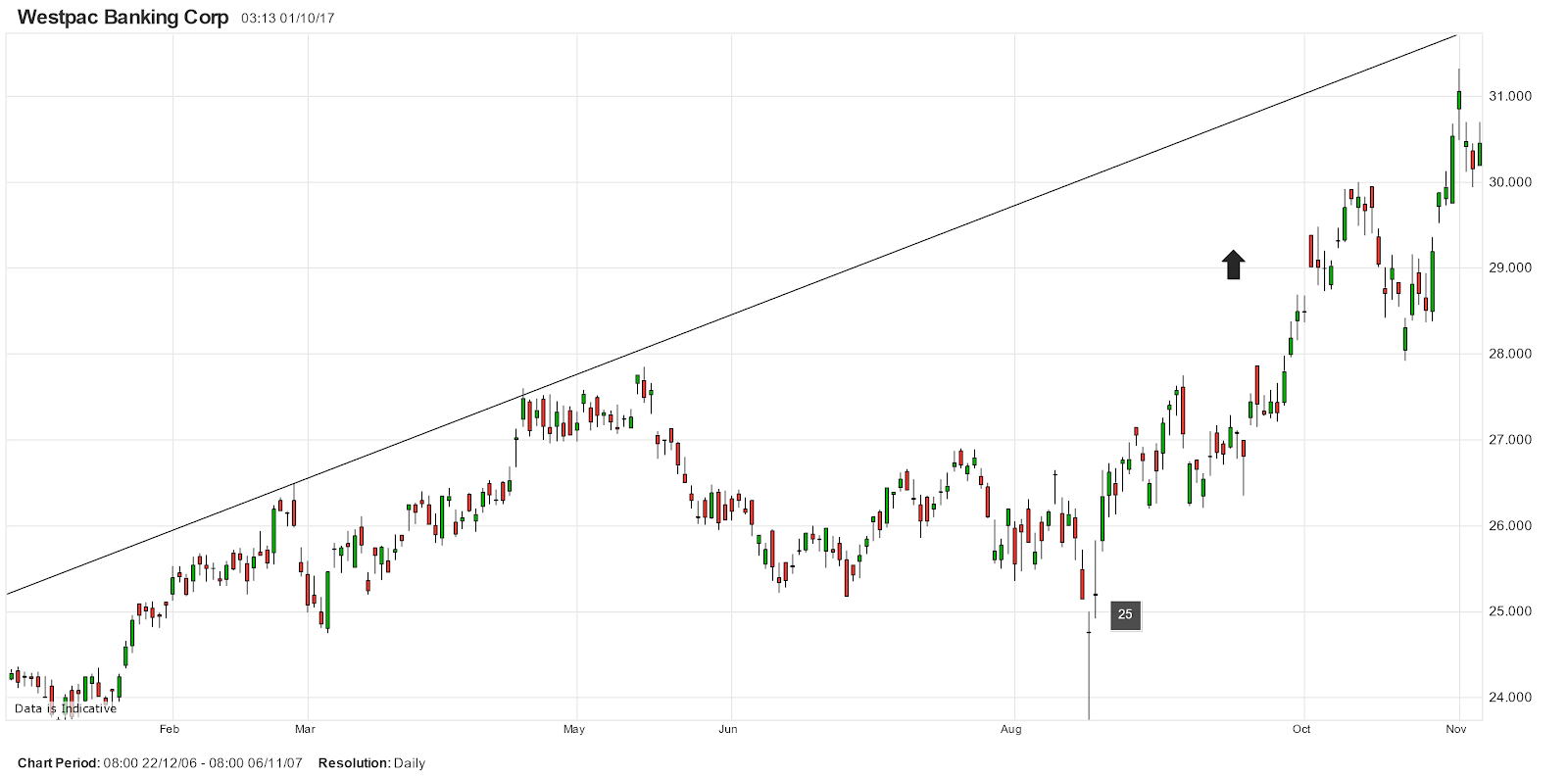Supply and Demand (The Market Force)
The law of supply and demand is a basic principle of economics; it determines the price of your products and services. Understanding this principle is crucial in order to grasp the idea of market price movement. There are numerous factors that affect the market’s supply and demand.
Generally, when demand increases, more buyers willing to pay, prices will begin to rise. When supply increases, meaning there are more products available to be sold, prices will drop.
Let’s use a simple illustration. Imagine that local consumers in your area love pears, and that there are no pear sellers in the area. Therefore, you decide to open a store to sell pears. In the beginning, you make a lot of profit as there are no other competitors and you are the only supplier; meaning the demand is greater than the supply. The people’s desires and demand of buying the pears has pushed the price higher. Soon enough, other stores start to sell pears due to the lucrative profits. After a short period of time, this results in an oversupply market of pears. The consumers now can choose to buy the cheaper pears from other sellers. There is an increase in supply and no increase in demand. Thus, in order to attract buyers, you and the other sellers will need to lower the price of your pears, resulting in a reduction of the overall price of pears.
The graph below shows where demand and supply curves intersect at equilibrium prices. Both demand and supply curves determine the equilibrium price and quantity in the market.
These economic principles can be applied to the stock market in the same way. The price of shares are determined by the forces of supply and demand. When more people are willing to buy, demand increases, and this pushes up the price. Eventually, due the rising prices, fewer and fewer people buy the shares. Share owners must then lower the prices of the shares in order to sell them. The prices fall until the investors again believe they are a worthy investment. Eventually, the reduced prices attract the next wave of purchases from buyers. This market phenomena happens over and over again, causing what technical analysts call “cycles” in the stock market.
As we know, prices go up when there are more buyers than sellers, and prices go down when there are more sellers than buyers. For example, you can see on the graph below that when the price of the stock dropped below $25, it became attractive to buyers. After this point, more buying occurred and that increased demand causing the prices to soar up. As long as the supply could meet the demand, prices would build momentum and continue rising. When the prices continue to increase due to an increase in demand (more buyers) or a decrease of supply (not enough sellers), the market is in what we call an “uptrend”.
Let’s look at another example. When the stock reached the price of $31, it became less attractive to the buyers. There was a reverse situation where buyers who bought those stocks at $25, $27 (or more) wanted to sell their shares for profits. As the buyers were selling their shares, they became the sellers, creating more supply, which caused the price to drop. As long as the supply exceeds demand, the price will keep lowering.
In the case where prices are reducing due to an increase of supply (more sellers) or a decrease of demand (less buyers), the market is in what we call a “down trend”.
In summary, the examples shown describe the market in general can be optimistic or pessimistic. When investors feel optimistic about a company or general state of the economy, they enter the market with bullish positions (buying), which drives prices up. Contrary, when investors feel pessimistic about a company, they enter with bearish positions (selling), which drive prices down. Both psychologies are essential when trading in the market for they are the forces that move the market.
“It takes big demand to move supply up, and the largest source of demand for stocks is by far the institutional buyer.” — William J. O’Neil
Understanding the influences of supply and demand are crucial in learning about the movement of stock prices. Most people assume that investors like you and I play a part of impacting the stock price. As quoted by William O’neil, only institutional buyers like mutual funds, pension funds and bank are ample to move the stock prices. Those major investors influence the market greatly when they act. Therefore it is important to know what the big players are doing via the news, interviews, company reports and other media.
Other than following the media, volume analysis provides important information to study the movement of the big players in the market. We will look into how we can recite information from volume in a separate article. Please continue to followed us or sign up to our free trading tips to know more.













